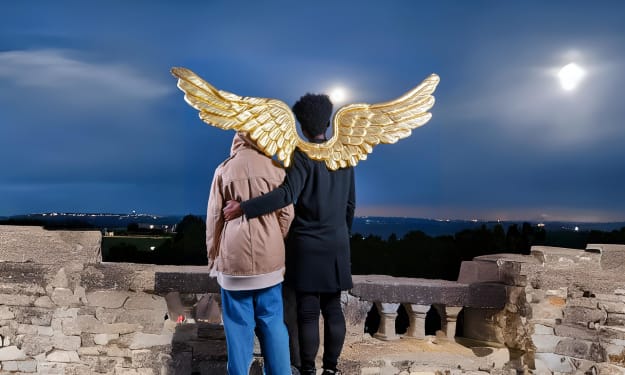Revealing History's Best-Kept Secrets:
Unearthing the Most Remarkable Historical Discoveries

The human journey through time is a tapestry woven with the threads of exploration, discovery, and curiosity. Throughout history, we've embarked on quests to unravel the mysteries of our past, often unearthing hidden treasures that reshape our understanding of the world. From the depths of the ocean to the heart of ancient civilizations, these historical discoveries have captivated our imaginations and brought us face-to-face with our rich and complex heritage.
The Antikythera Mechanism

Hidden beneath the waves of the Aegean Sea for over two millennia, the Antikythera Mechanism is one of the most intriguing historical finds of all time. Discovered by sponge divers off the coast of the Greek island of Antikythera in 1901, this mysterious artifact has since been hailed as the world's first analog computer.The Antikythera Mechanism, dating back to 100 BC, is a complex, bronze device with numerous gears and dials. Researchers believe that it was used to predict astronomical positions and eclipses, serving as a testament to the astounding engineering skills of the ancient Greeks. Its discovery shed light on the scientific and technological prowess of a civilization that thrived centuries before our time.
King Tut's Tomb

In the heart of Egypt's Valley of the Kings, British archaeologist Howard Carter made a discovery that would make headlines around the world. In 1922, he uncovered the tomb of Tutankhamun, the boy king of ancient Egypt. This remarkable find provided an unparalleled glimpse into the opulence and mystique of the Egyptian civilization, frozen in time for over 3,000 years.Inside King Tut's tomb were priceless treasures, including jewelry, chariots, and golden artifacts. The most iconic of all was the young pharaoh's intricately decorated death mask, which remains a symbol of ancient Egypt's grandeur. The discovery of King Tut's tomb was not only a historical revelation but also a testament to the unyielding allure of Egyptology.
The Dead Sea Scrolls

In 1947, a Bedouin shepherd stumbled upon a collection of ancient manuscripts in the caves of Qumran, near the Dead Sea. These scrolls, known as the Dead Sea Scrolls, are perhaps the most significant archaeological discovery of the 20th century. Written in Hebrew, Aramaic, and Greek, these documents date back to around 150 BC to AD 70.The Dead Sea Scrolls contain fragments of every book of the Hebrew Bible (except the Book of Esther) and other non-canonical texts. Their discovery shed new light on the religious and historical context of the time, offering invaluable insights into the development of Judaism and Christianity. They continue to be a subject of intense scholarly research and public fascination.
Machu Picchu

Nestled in the Andes Mountains of Peru, Machu Picchu remained hidden from the world until its rediscovery in 1911 by American historian and explorer Hiram Bingham. This ancient Incan citadel is a marvel of architecture and engineering, perched on a ridge nearly 8,000 feet above sea level.Machu Picchu is believed to have been built in the 15th century and was likely an estate for the Inca emperor Pachacuti. The site is renowned for its sophisticated dry-stone construction, agricultural terraces, and its astronomical observatory. The city's remote location in the clouds has preserved its ruins remarkably well, making it a UNESCO World Heritage Site and a testament to the ingenuity of the Inca civilization.
Rosetta Stone

The Rosetta Stone, discovered in 1799 by French soldiers during Napoleon's campaign in Egypt, is a key to understanding the mysteries of ancient languages. This inscribed stone tablet, which contains the same text in three scripts: hieroglyphs, demotic script, and ancient Greek, provided the crucial breakthrough for deciphering Egyptian hieroglyphs.Thomas Young, a British polymath, and Jean-François Champollion, a French scholar, were pivotal in unlocking the secrets of hieroglyphs using the Rosetta Stone. This monumental discovery allowed historians and archaeologists to understand the history, culture, and daily life of ancient Egypt in ways previously thought impossible.
Pompeii

The eruption of Mount Vesuvius in 79 AD had a devastating impact on the ancient Roman city of Pompeii, burying it beneath a thick layer of ash and pumice. For centuries, the city remained lost to history until its accidental rediscovery in the 18th century.Pompeii's excavation revealed a remarkably well-preserved snapshot of daily life in ancient Rome. The city's streets, homes, and even its inhabitants were preserved in astonishing detail. The casts of human bodies, created by filling voids in the ash with plaster, offer a haunting yet fascinating glimpse into the final moments of Pompeii's residents.
The Terracotta Army

In 1974, a group of farmers in Xi'an, China, unearthed one of the most astonishing archaeological finds of the 20th century: the Terracotta Army. These life-sized clay soldiers, horses, and chariots were created to accompany China's first emperor, Qin Shi Huang, in the afterlife.The Terracotta Army consists of thousands of intricately crafted figures, each with unique facial expressions and poses. This remarkable discovery not only reflects the craftsmanship of the Qin Dynasty but also provides valuable insights into the political and military structure of ancient China.
The Lost City of Petra

Hidden within the red-rock canyons of southern Jordan, Petra is a city that remained unknown to the Western world until the early 19th century. This ancient Nabatean city is famous for its stunning rock-cut architecture, most notably the iconic Treasury building.Carved into the rose-red cliffs, Petra served as a crucial junction for the silk and spice trade routes in ancient times. Its discovery in the modern era ignited the imaginations of explorers and archaeologists alike, uncovering a city that was once a thriving center of commerce and culture.
Göbekli Tepe

Göbekli Tepe, located in present-day Turkey, is rewriting the history of human civilization. Discovered in the 1960s, this ancient site dates back to 9600 BC, making it older than Stonehenge and the Egyptian pyramids.The most intriguing aspect of Göbekli Tepe is its complex, circular stone pillars adorned with intricate carvings of animals and symbols. It's believed to have served as a religious or ceremonial center, challenging our previous understanding of the development of organized religion and society.
Conclusion
The world of archaeology is a continuous journey of discovery and rediscovery, uncovering hidden treasures and rewriting the annals of history. These remarkable historical discoveries are not just captivating in their own right but also a testament to human ingenuity and the enduring quest for knowledge
About the Creator
Drickzinfo
Rasdrick is a relentless knowledge enthusiast
.Passionate knowledge curator behind DricksInfo, making wisdom accessible with well-researched articles and thought-provoking content., information, technology, science, travel, lifestyle,






Comments (1)
So many wonders of the world!